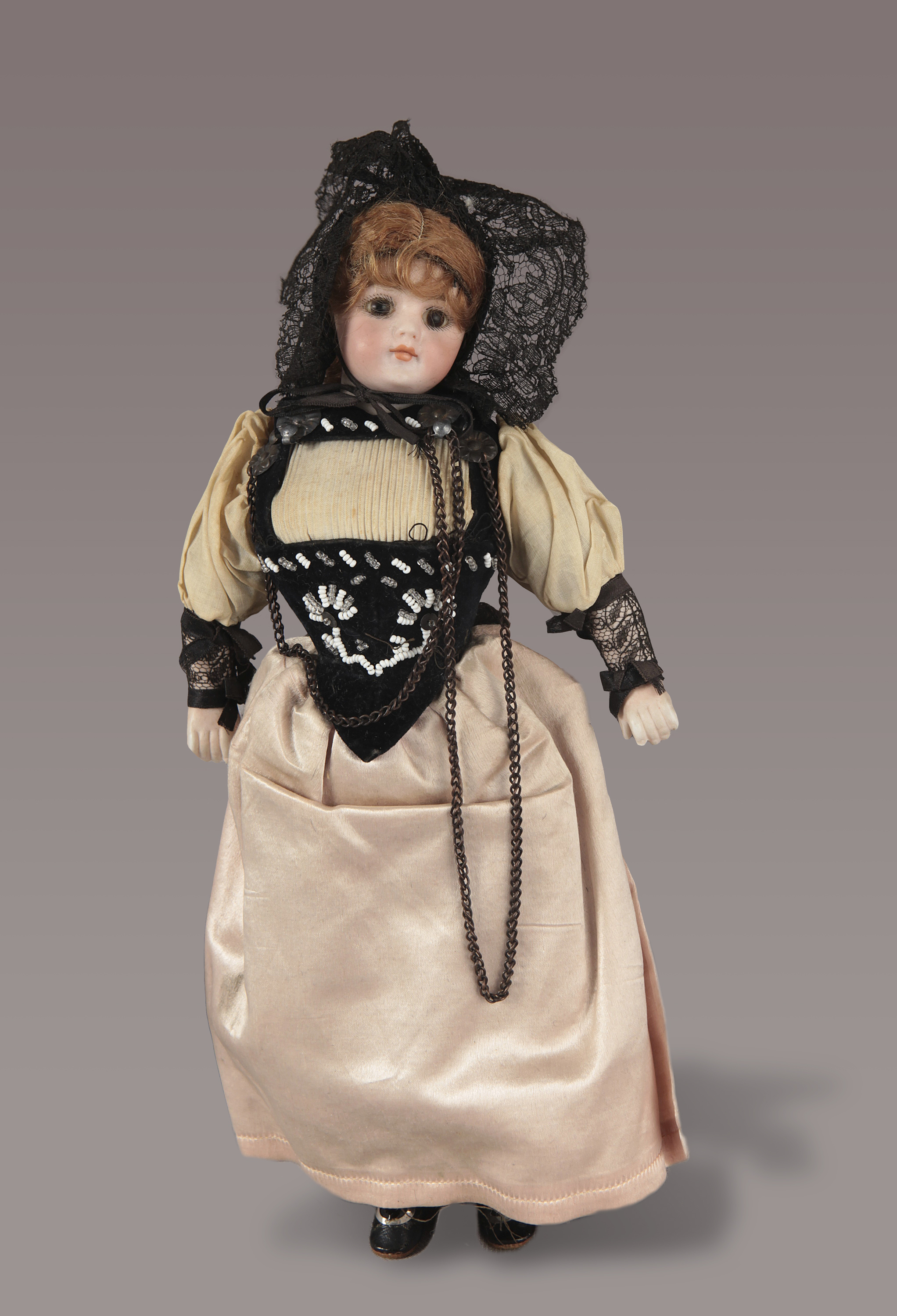Swiss Doll
Dublin Core
Title
Swiss Doll
Subject
Doll
Description
This late 19th/early 20th century doll comes from the European country of Switzerland and reflects a cultural emphasis on realism and idealized beauty in dolls of this period.
Most western dolls created during this time were made with bisque porcelain, a ceramic material that allowed for the production of realistic human features. The time-consuming process required considerable skill and effort to achieve this realistic effect. The bisque porcelain is poured into thick plaster of Paris molds, and left to settle until they are ready to be unmolded and dried. All pieces must be left to air-dry and only then can they be fired in a kiln at an extremely high temperature. Once out of the kiln, they are sanded until completely smooth. Skilled artists then apply oil color paint to create eyelashes, eyebrows, nose dots, blushed cheeks and lipstick, to make the perfect face. Mohair, similar to texture and qualities to human hair, was then secured to the porcelain head, and could be braided, curled or kept straight. Intended for play, the time-consuming process of creating these objects also reflects the goal of making them aspirational objects whose idealized beauty made them sought-after playthings and collectibles.
Most western dolls created during this time were made with bisque porcelain, a ceramic material that allowed for the production of realistic human features. The time-consuming process required considerable skill and effort to achieve this realistic effect. The bisque porcelain is poured into thick plaster of Paris molds, and left to settle until they are ready to be unmolded and dried. All pieces must be left to air-dry and only then can they be fired in a kiln at an extremely high temperature. Once out of the kiln, they are sanded until completely smooth. Skilled artists then apply oil color paint to create eyelashes, eyebrows, nose dots, blushed cheeks and lipstick, to make the perfect face. Mohair, similar to texture and qualities to human hair, was then secured to the porcelain head, and could be braided, curled or kept straight. Intended for play, the time-consuming process of creating these objects also reflects the goal of making them aspirational objects whose idealized beauty made them sought-after playthings and collectibles.
Creator
Swiss
Source
From the collection of Mrs. Vernon Dilley
Date
Late 19th century/Early 20th century
Contributor
Curated by Brittany Blanchard
Format
bisque porcelain, mohair, velvet, beads, lace, silk, metal, oil paint
Type
Image
Identifier
1936.70.3
Coverage
Western-Switzerland
About the Original Item
- Date Added
- May 2, 2011
- Collection
- Fleming Museum
- Item Type
- Image
- Citation
- Swiss, “Swiss Doll,” Omeka@CTL, accessed December 19, 2025, http://libraryexhibits.uvm.edu/omeka/items/show/594.
- Associated Files

